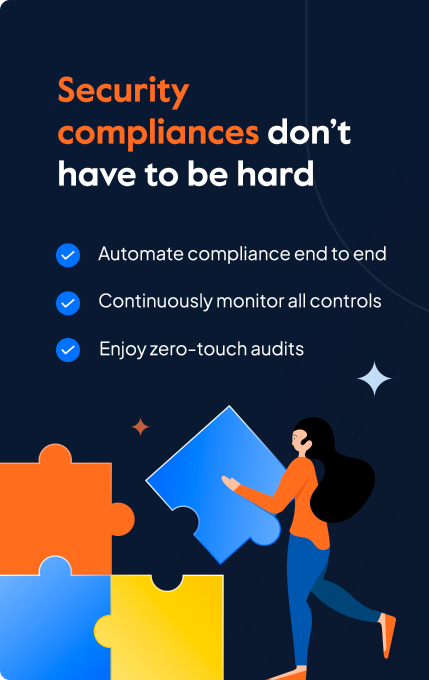Sprinto’s System Acquisition & Development Lifecycle Policy Template
The system acquisition and development lifecycle policy template helps organizations carefully integrate security considerations into all phases of the development lifecycle.

What is a system acquisition & development lifecycle policy template?
The system acquisition & development lifecycle policy template outlines a framework for integrating security with information systems across lifecycle phases—acquisition, development, and maintenance. It covers everything from requirement analysis and design to testing and support processes, ensuring a secure-by-design approach for your software products.
Why do you need this template?
The system acquisition & development lifecycle policy template is essential for incorporating security measures throughout the development process. It guides you in defining security requirements, establishing protected development environments, implementing secure coding practices, and conducting thorough testing protocols.

Training resource
Leverage pre-defined guidelines for maintaining network security and train the workforce on best practices.

Consistent practices
Establish a standardized approach across the organization for implementing and monitoring network security controls.

Quick implementation
Eliminate the need to draft policies from scratch and fast-track the rollout and communication process.

Seamless scalability
Easily adapt and reuse the template to accommodate the organization’s growing security needs.
How to use the system acquisition & development lifecycle policy template?

Design and customize
Customize this template according to your business context and security requirements. Be forward-thinking when applying its scope to your business.

Test your template
Validate the steps included in this template for accuracy. Test the policy template and make changes to ensure proximity to the business context.

Acquaint your workforce
Educate your workforce on the scope of the policy, their roles and responsibilities within the function it covers, and how to use it effectively.

Make improvements
Review your policy on a regular basis (ideally once every 6 to 12 months) to ensure it is up to date and aligned with industry requirements.

Leverage automation
Roll out policies, schedule security and policy training, and gain completion acknowledgements within a single interface to ensure 100% adherence.
System Acquisition & Development Lifecycle Policy Template
Get started with this template right now. It’s free


